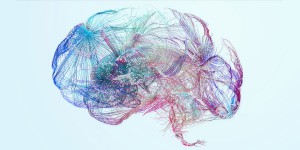By Mariano Garcia de Palau

Born in Barcelona, 17 February 1956. Graduated in medicine and surgery from the University of Barcelona in 1979. For 38 years has worked as an emergency physician in the area of occupational medicine. He became interested in cannabis by chance, and for the last 15 years has studied its therapeutic uses.
Currently he continues to advise on cannabinoid treatments and performs clinical work with patients, collaborates with various organizations and associations, serves as Senior Consultant for Grupo Curativa Colombia and is a spokesperson for the Spanish Medical Cannabis Observatory.
Alzheimer's disease (AD) is now the most common cause of dementia, accounting for 65% of all recorded cases; in general it affects people aged 60 years and over. Alzheimer's is an irreversible neurodegenerative disease, leading –at a varying rate– to a loss of cognitive capacities.
Clinical characteristics of AD include memory loss –particularly of recent events in the earlier stages of the process– together with alterations in cognitive capacities that interfere with mood, reasoning and verbal expression. The disease develops stealthily and some AD patients can live for up to 20 years after diagnosis, although the average survival time is between 5 and 10 years. Age is the main risk factor; from 60 years on, the probability of suffering the disease doubles every five years. For this reason, AD is seen as one of the greatest health problems of our time, and it will have a growing socio-economic impact in coming decades.
As well as suffering memory loss, people with Alzheimer's disease often have problems with verbal language and find themselves unable to express themselves properly, suffering a reduction in vocabulary. Other frequent changes include disorientation, behavioural changes, insomnia, nocturnal agitation –i.e. biorhythm alterations– and appetite loss.
These are caused by a gradual destructuring of the brain as the disease spreads. Alzheimer's disease develops at different rates depending on the individual, although there are quantifiable genetic and hereditary factors that determine its spread.
The causes of the disease are currently unknown, although in recent years our understanding of the molecular mechanisms involved in the development of the disease has improved.
We basically know that a protein called amyloid beta builds up in the brain tissue, forming plaques and neurofibrillary tangles, which lead to neuroinflammation and toxicity in the brain tissue, resulting in a loss in brain volume as a result of neuron death. This evidently leads to a loss in the patient capabilities. Initially, this tends to be manifested in an effect on memory. From a certain age, this is difficult factor to assess, although there are a number of tests and questionnaires that offer acceptable guidance when considering a diagnosis of Alzheimer's disease.
The therapeutic arsenal available for treating AD continues to be very limited at this time. Among the drugs most commonly used today are acetylcholinesterase inhibitors (donepezil, rivastigmine and tacrine). Acetylcholinesterase is the enzyme responsible for the degradation of the neurotransmitter acetylcholine. Use of these drugs has been justified by the observation that some of the cognitive, functional and behavioural alterations in AD patients may generally be explained by a cholinergic deficit in the brain. However, other lines of therapy need to be considered to address different aspects of the disease. Here the use of agents capable of modulating the endocannabinoid tone may be important. They include antiglutamatergic, antioxidant and anti-inflammatory agents and others used to address certain symptoms of the disease, such as loss of appetite, sleep disorder and behavioural changes.
Although the use of cannabinoids might initially be seen as counterproductive in treating AD, due to their psychoactive effects and their effect on the memory (considering that THC use affects short-term memory), there are other aspects of the disease's symptomatology for which they can have beneficial effects. These include nocturnal agitation, in which THC and CBD appear to have a beneficial effect. Their effect as appetite stimulants and antiemetics may also be useful in the treatment of such patients.
There are studies indicating that the endocannabinoid system is directly involved in processes that develop in the brain of Alzheimer's disease patients.
Here we might consider the use of phytocannabinoids for treating these patients' pathologies.
There are two situations in which cannabinoids have shown to be effective, neuroinflammation and oxidative stress, which lead to neurotoxicity and neuron death in the medium and long term.
It is also important to remember that phytocannabinoids have a low level of toxicity. This means that they are safe to use without risking the appearance of side effects that might endanger the lives of patients or create inconvenient situations. It is worth stressing that acute cannabis intoxication has never been found to be a direct cause of death.
Studies have essentially centred on the application of Cannabidiol (CBD) for medium and long term treatment, since it possesses very interesting properties for treating the symptomatology and counteracting the situation of neuroinflammation presented by the patients.
We have discussed neuroinflammation, and CBD is also an effective anti-inflammatory in the CNS, where inflammatory processes associated with the accumulation of plaques and neurofibrillary tangles generate a great number of molecules that are toxic for neurons. These molecules, free radicals, are toxic for the cells, and constitute what is known as oxidative stress. The ability to eliminate or counteract these radicals is crucial for the equilibrium of cells and tissues, and CBD also offers the antioxidant effect needed in this situation.
Studies are therefore being carried out into the use of CBD in the treatment of Alzheimer's disease. However, as yet no medium and long term results are available that might determine the effectiveness of their use, which is also determined by the phase of the disease in which treatment begins.
Many patients present symptoms of anxiety and here the anxiolytic effect of CBD is useful. It can also be used in nocturnal doses to induce sleep among patients with mild sleep disorder. It is often necessary to associate treatment with THC, in order to treat the insomnia or nocturnal agitation found in some patients.
In many cases, CBD also helps improve cognitive aspects, which are quantifiable and have been confirmed by family and carers. Some patients experience an improvement in verbal language, better orientation, better communication with their surroundings and greater emotional stability – all within reasonable expectations and in relationship to the specific phase of the disease and the circumstances of each patient.
We may therefore expect short-term effects from treatment with cannabinoids, since they act on the symptomatology that patients present, but it would also be possible to act in the medium and long term, to slow or halt development of the disease. Current studies and any clinical trials performed in the future will determine whether cannabinoids come to form part of the therapeutic arsenal used for patients with Alzheimer's disease.


